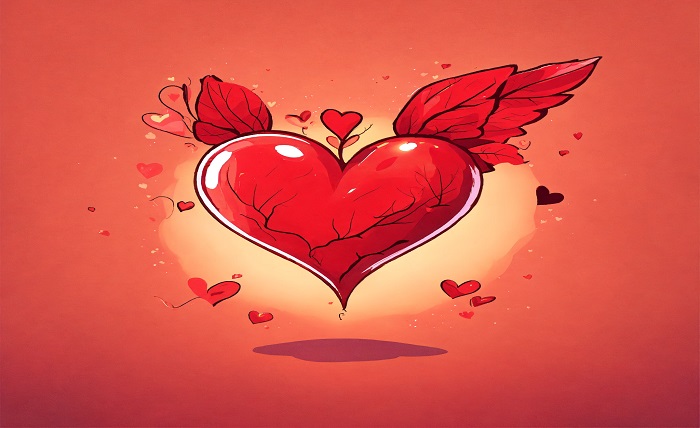Shayari: The Heartfelt Poetry That Speaks to Every Emotion

Shayari is a timeless form of poetic expression that has touched countless hearts across generations. Rooted deeply in South Asian culture, shayari is more than just beautifully crafted words—it is the art of capturing emotions, moments, and experiences in a way that resonates universally. From love to sorrow, humor to inspiration, shayari is a language of feelings that transcends boundaries. The beauty of shayari lies in its ability to paint vivid images in the reader’s mind while also stirring the deepest corners of the heart. In a world full of hurried communication, shayari reminds us of the power and elegance of words.
The Rich History of Shayari
The history of shayari spans centuries, tracing its origins to Persian and Urdu literary traditions. Shayari evolved through cultural exchanges in Mughal India, where poets such as Mirza Ghalib, Allama Iqbal, and Faiz Ahmed Faiz elevated the art form to new heights. These masters of shayari crafted verses that combined philosophical depth with aesthetic beauty. Over time, shayari adapted to multiple languages including Hindi, Punjabi, and Bengali, expanding its reach and appeal. Historical shayari often reflected the societal and political environment of its time, making it both a personal and historical treasure. Through handwritten manuscripts, public mushairas, and now digital media, shayari continues to thrive as an enduring cultural legacy.
Different Types of Shayari
Shayari comes in many forms, each tailored to convey a specific emotion or mood. Romantic shayari explores themes of love, passion, and longing, often using metaphors that evoke tenderness and desire. Sad shayari, on the other hand, dives into heartbreak, loss, and melancholy, offering solace to those in pain. Motivational shayari inspires readers to overcome challenges and pursue their dreams. Humorous shayari brings laughter with witty wordplay, while philosophical shayari explores life’s deeper meanings. Each type of shayari showcases the flexibility of the form, allowing poets to connect with audiences in a personal and impactful way.
Shayari in Modern Communication
In today’s digital era, shayari has adapted seamlessly into modern forms of communication. Social media platforms like Instagram, Facebook, and Twitter have become new stages for sharing shayari, reaching audiences far beyond traditional mushairas. Romantic shayari is often used as captions for photographs, while friendship shayari strengthens bonds in personal messages. Influencers incorporate shayari into videos and reels, making it part of visual storytelling. The brevity of shayari makes it ideal for quick yet meaningful communication, proving that even in a fast-paced digital world, this poetic form maintains its charm and relevance.
Famous Poets Who Popularized Shayari
The legacy of shayari would not be complete without the contributions of legendary poets. Mirza Ghalib’s shayari is celebrated for its depth, complexity, and emotional resonance. Allama Iqbal’s shayari inspired generations with messages of self-belief and empowerment. Faiz Ahmed Faiz infused his shayari with romance and revolution, making it both passionate and thought-provoking. Contemporary poets like Rahat Indori brought shayari into mainstream pop culture with electrifying performances. Each of these poets showcased how shayari could be both personal and universal, shaping it into one of the most cherished forms of poetry in the world.
Shayari in Bollywood and Music
Bollywood has played a crucial role in popularizing shayari among the masses. Many iconic films feature dialogues and songs enriched with shayari, adding emotional depth to storytelling. Lyricists like Gulzar and Javed Akhtar have written shayari that turned into unforgettable songs, blending music and poetry seamlessly. From romantic duets to melancholic solos, shayari in Bollywood enhances the audience’s connection to characters and scenes. Even in today’s music industry, shayari continues to influence lyrics in ghazals, qawwalis, and indie music, ensuring that the tradition remains alive in the hearts of listeners.
How to Write Your Own Shayari
Writing shayari is an art that combines emotion with craftsmanship. To start, choose a theme—love, sorrow, friendship, or hope—and reflect on the feelings you want to convey. Use metaphors, similes, and imagery to create vivid mental pictures. Rhythm and rhyme are important elements in shayari, so pay attention to word flow. Reading and analyzing the works of famous poets can inspire and refine your technique. Above all, writing shayari should come from the heart, as authenticity is what makes it resonate with readers. Practice and patience will help you find your unique voice in the world of shayari.
The Global Influence of Shayari
While shayari is deeply rooted in South Asian traditions, its appeal has crossed borders and languages. Translations of famous shayari have introduced global audiences to its beauty, while bilingual poets are blending shayari with other poetic traditions. Online communities have made it easier for shayari lovers from different countries to connect, share, and collaborate. This cultural exchange enriches the art form and ensures its continued growth. Whether performed on a stage in Delhi or shared on a social media feed in New York, shayari remains a universal language of emotion.
Conclusion
Shayari is not merely a poetic form—it is a mirror of human emotions and experiences. From its rich historical roots to its modern digital presence, shayari has adapted without losing its essence. It bridges the gap between the personal and the universal, touching hearts across time and geography. Whether you are reading the classics or writing your own verses, shayari invites you to slow down, reflect, and feel. Its enduring charm lies in its ability to make words dance with emotion, ensuring that shayari will continue to inspire generations to come.
FAQs
1. What is the meaning of shayari?
Shayari is a form of poetic expression, often in Urdu, Hindi, or other South Asian languages, used to convey emotions with beauty and depth.
2. Who is considered the best shayar of all time?
Mirza Ghalib is widely regarded as one of the greatest shayars, known for his profound and timeless poetry.
3. Can shayari be written in any language?
Yes, while traditionally in Urdu and Hindi, shayari can be written in any language while preserving its poetic essence.
4. How can I improve my shayari writing?
Read works by famous poets, practice regularly, and focus on using vivid imagery, metaphors, and emotional authenticity.
5. Where can I share my shayari?
You can share your shayari on social media, blogs, poetry forums, or participate in open mic events and mushairas.




